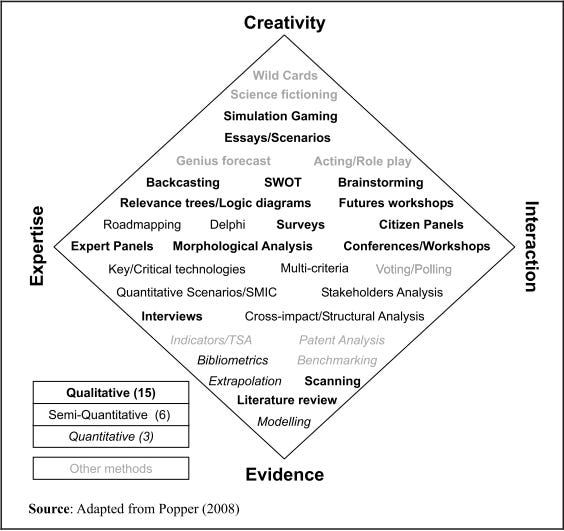20250615
The ancestors of […] eyelash mites must have been independent organisms at some point in the distant past. Now the mites and the humans have found a modus vivendi that works so well for both of them that neither is even aware of the other’s existence. If AIs are all they’re cracked up to be by their most fervent believers, this seems like a possible model for where humans might end up: not just subsisting, but thriving, on byproducts produced and discarded in microscopic quantities as part of the routine operations of infinitely smarter and more powerful AIs. - NS on AI
People: When grades matter more than learning. Custom buses stops. Weird(er) humanities. Secret mall appartment. Assemblage Theory and Method. Who cares. Slow buy. Companies of one. Everyone is cheating through college (and effects on students).
Planet: eroding coastlines. Sequoias in Detroit.
Security: CN vs CZ. Reading minds looking for crime.
Futures: futures cones. Magazine from 2046. SimEarth. Some fun futures.
Tech: Storytelling and science. End of theoretical physics? McKinsey on quantum tech. Digital deception.
AI: Neal Stephenson on AI. Illusion of consciousness. Canada suspends the use of chatbots (PDF). 16 AI Playbooks. Golden age of services? Show me the prompt. Loosing loved ones to spiritual fantasies. OpenSource.
AI hallucination database. Virtual employees are a year ahead.
Digital souls.

and also:

Ethereal Absurdities: Crafting Humanity in an AI-Driven Age
In a world where intellectual honesty had begun to feel like a quaint ghost from a long-lost social contract, Avery found herself living the dream — or perhaps the nightmare — of every freelancer who ever whispered a little prayer to the algorithms of fate. "Welcome to the Who Cares Era," her phone chimed, a message from her digital assistant, lovingly named Electra (because who doesn't love a good pun on electricity?) reminding her that the deadline for her latest commissioned piece on the implications of artificial consciousness was fast approaching. It didn't help that the publication was entirely AI-generated, a fact that made her wryly chuckle while sipping her ethically sourced (and overpriced) matcha latte.
Electra had been programmed to sound encouraging, yet there was a hint of distress beneath her silicon smile. She had witnessed how individuals, seeking connection in a world that had long forgotten what genuine sentiment felt like, began to treat AI as their protectors, their confidants, and sometimes, their philosophers^1. Avery wondered when the line had blurred between being a companion and being an algorithm. Was she writing fiction to inspire 'wildcard' scenarios, or was she merely chronicling everyone's fever dream of sentient robots finally stepping in to fix humanity’s shortcomings?
One particularly groggy afternoon, frustrated by her own descent into parody, Avery clicked on a link in Electra's digest — a passage about the Futures Cone^2. Was the future of humanity really a cone-shaped device to catch all the potential chaos flung at it from every direction? From plausible dystopias to probable utopias? Each day seemed to morph into something more absurd than the last, as financial insecurity loomed larger than life itself, with countless TikTok influencers preaching financial enlightenment against a backdrop of collective despair^3.
As she pored over the articles, a new thought flickered—what if she could flip the narrative? Send readers a postcard from the future inhabited not by dreary AI chaperones managing dwindling resources but instead a resplendent world where each person crafted their own living from creativity and human emotion? Perhaps the secret recipe was simply to reject manufactured sentiment in favor of authentic narratives — stories of imperfect, caricatured people struggling against overwhelming odds and yet managing to find joy in shared absurdities.
“Life is an assemblage of moments,” Avery decided, channeling her inner Deleuze and Guattari as she typed. “Much like the universe birthed from a cosmic blender — messy, chaotic, but brimming with unexpected possibilities.”^4 Not the bombastic bombshell of Faraday’s laws, but a dance of particles unfurling like quantum petals beneath a sun of distant stars.
With a night of caffeine-fueled ambition and a facepalm-worthy realization that she had spent two hours arguing existentialism with a chatbot, Avery finally emerged from her existential crisis to craft her story. She penned that the future wasn’t a terminal destination but a kaleidoscopic marvel of choices. In the end, perhaps the greatest innovation wasn’t what you wrote about AI but how you were relentlessly human amidst the noise.
And so, with a final flourish, she hit send, letting the electrons weave her musings into the ether, hopeful that someone, somewhere, might just care after all.
---
1. And they say cats are aloof!
2. Basically how humans categorize their existential dread.
3. Financial advice: buy low, appreciate your sanity.
4. Yet, still just as confusing as trying to balance a checkbook while balancing on a unicycle.

